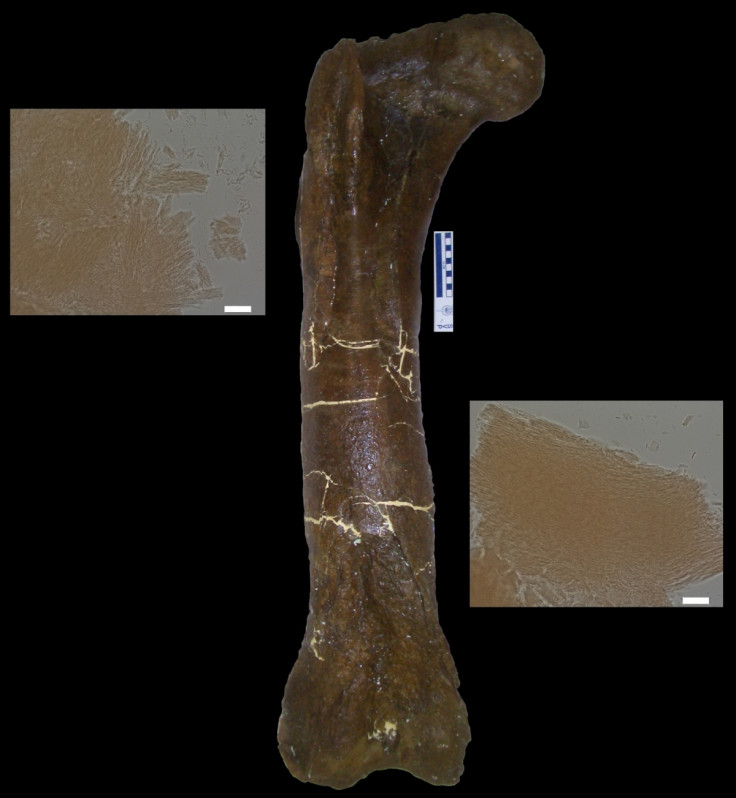Pregasaurus rex: Pregnant T-rex identified through 68-million-year-old reproductive tissues

A pregnant Tyrannosaurs rex has been discovered through 68-million-year-old reproductive tissues, opening up the possibility of determining the sex of dinosaurs through a "chemical fingerprint". Scientists discovered the T-rex has a medullary bone, which is found only in female birds during the period before or during egg-laying.
The fossil, known as MOR 1125, was discovered in Montana in 2000. In 2005, the specimen made headlines worldwide, with Mary Higby Schweitzer of North Carolina State University and colleagues announcing they had recovered soft tissue from the marrow cavity from its femur. However, their results were deemed controversial and questioned by many.
At the time, the team said they believed some of the tissue discovered was medullary bone, but that further research was required for confirmation. In their latest study, published in Scientific Reports, the authors have confirmed the presence of medullary bone through chemical analysis.
Medullary bone is chemically distinct from other bone types as it has to be laid down and mobilised quickly so that birds can shell their eggs. Because theropod dinosaurs are ancestors of modern birds, laid eggs, scientists believe they too would have had medullary bone.
Schweitzer said: "All the evidence we had at the time pointed to this tissue being medullary bone, but there are some bone diseases that occur in birds, like osteopetrosis, that can mimic the appearance of medullary bone under the microscope. So to be sure we needed to do chemical analysis of the tissue."

Medullary bone contains a substance called keratan sulphate, which is not found in other bone types. They tested for keratan sulphate then compared the results to tests carried out on ostrich and chicken bones. Findings showed the tissue from the T-rex was indeed medullary bone.
The discovery should provide an insight into the evolution of egg-laying in modern birds, Schweitzer said. "We demonstrate that the unique chemical composition of MB [medullary bone] in birds is retained and can be identified in a non-avian theropod dinosaur, thereby supporting the homology of these tissues with MB in living birds," the authors concluded.
They also said the find provides a new way to identify dinosaurs as male or female – an area scientists have made little headway in, despite huge efforts. Study co-author Lindsay Zanno said: "It's a dirty secret, but we know next to nothing about sex-linked traits in extinct dinosaurs. Dinosaurs weren't shy about sexual signalling, all those bells and whistles, horns, crests, and frills, and yet we just haven't had a reliable way to tell males from females.
"Just being able to identify a dinosaur definitively as a female opens up a whole new world of possibilities. Now that we can show pregnant dinosaurs have a chemical fingerprint, we need a concerted effort to find more."
© Copyright IBTimes 2025. All rights reserved.






















